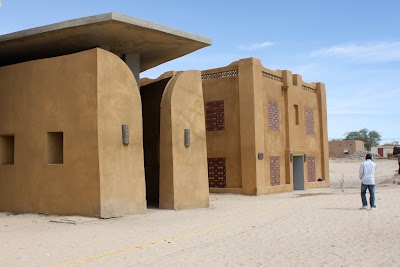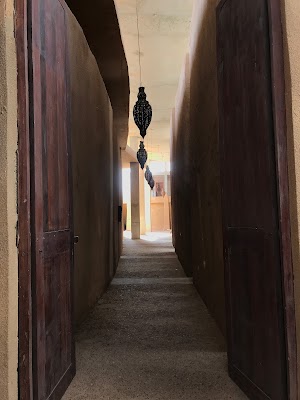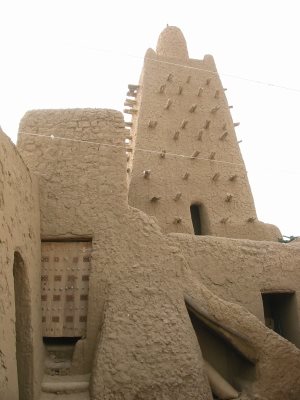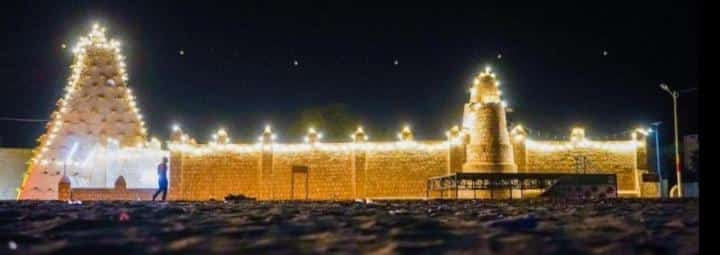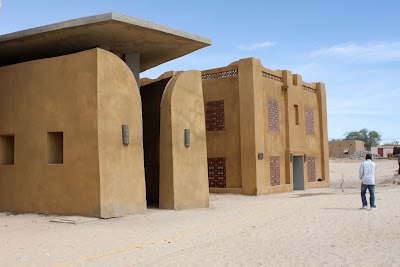Ahmed Baba Institute (معهد أحمد بابا)
Overview
In the heart of the historic city of Timbuktu, nestled within Mali's Tombouctou Region, lies the Ahmed Baba Institute. This institution offers a captivating glimpse into the rich intellectual heritage of West Africa. Named after one of the region's most celebrated scholars, Ahmed Baba, the institute stands as a symbol of Timbuktu’s golden age of learning and its enduring legacy of scholarship.
Established in 1973, the Ahmed Baba Institute was founded to document and preserve a vast collection of manuscripts that testify to Timbuktu’s historical significance as a center of trade, culture, and Islamic learning from the 13th to the 17th centuries. Named after the renowned 16th-century scholar and jurist, Ahmed Baba, whose contributions to Islamic jurisprudence, literature, and history have left an indelible mark on the academic landscape, the institute embodies the rich scholarly tradition of the city.
One of the most fascinating aspects of the Ahmed Baba Institute is its impressive collection of over 30,000 manuscripts. These manuscripts cover a diverse array of subjects, including astronomy, medicine, mathematics, and theology, and are written in various languages such as Arabic, Songhai, and Tamashek. This linguistic diversity reflects the multicultural and multiethnic influences that shaped Timbuktu’s scholarly community, showcasing centuries of knowledge-sharing and highlighting the intellectual vibrancy that once flourished in this remarkable region.
For tourists, a visit to the Ahmed Baba Institute presents a unique opportunity to step back in time and explore the scholarly achievements that characterized Timbuktu. The institute's museum and exhibition spaces offer an immersive experience, displaying significant manuscripts alongside detailed explanations of their historical and cultural contexts. Preservation and restoration efforts are also highlighted, illustrating the challenges and triumphs of safeguarding such invaluable heritage from threats like environmental degradation and political turmoil.
The architecture of the institute is equally noteworthy, merging traditional Saharan designs with modern elements to create a space that is both functional and aesthetically pleasing. Characterized by its mud-brick construction and crenellated walls, the building exemplifies the distinct Malian architectural styles typical of the Sudano-Sahelian region. This harmonious integration of old and new makes the Ahmed Baba Institute not only a visually appealing site but also an educational hub.
Beyond its role as a museum, the Ahmed Baba Institute functions as a research center, attracting scholars from around the globe eager to study the manuscripts and enhance the understanding of West African history and culture. The institute’s library and reading rooms provide a tranquil environment for research and exploration, positioning it as a vital academic center in the region.
An inspiring aspect of the Ahmed Baba Institute is its resilience in the face of adversity. During the conflict in Mali in 2012 and 2013, the institute faced significant threats, with many fearing the loss of its priceless collections. However, the staff and local community undertook heroic efforts to protect and relocate the manuscripts, ensuring their preservation for future generations. This story of courage and dedication adds contemporary significance to the institute, highlighting the value placed on cultural and intellectual heritage by the people of Timbuktu.
For those planning a visit, the Ahmed Baba Institute is conveniently located near other notable sites in Timbuktu, including the iconic Djinguereber Mosque and the Sankore Madrasah, both UNESCO World Heritage Sites. The proximity of these landmarks allows tourists to experience the broader historical and cultural landscape of Timbuktu, deepening their appreciation of its contribution to global heritage.
In conclusion, the Ahmed Baba Institute is not just a repository of ancient manuscripts; it is a living testament to the enduring legacy of Timbuktu’s scholarly tradition. Its collections, architecture, and the inspiring stories of those preserving it combine to create a compelling destination for tourists interested in history, culture, and the resilience of human knowledge. A visit to the institute offers a unique opportunity to connect with the intellectual spirit of West Africa and to witness firsthand the treasures of learning that have been passed down through the centuries.


